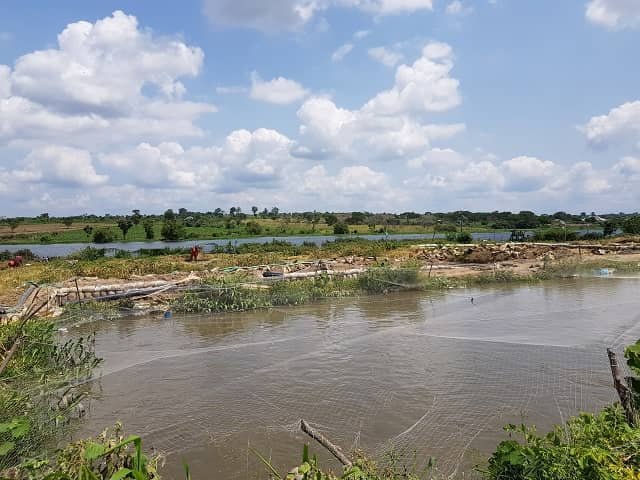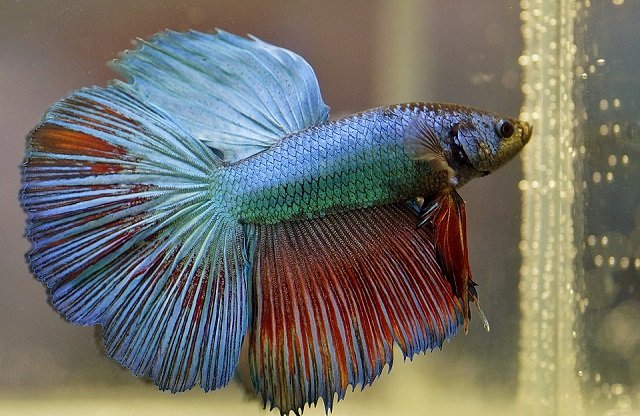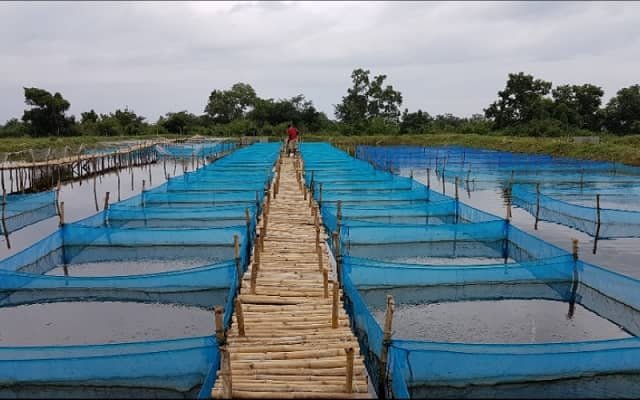
Copper sulfate has been an ally for fish farmers for over a century to combat a persistent enemy: harmful algal blooms (HABs). However, a recent study from the Auburn University School of Fisheries and the United States Department of Agriculture suggests that the way we have been calculating the dosage might not be the most efficient or safest for our aquatic ecosystems.
For decades, the recommendation for dosing copper has been based almost exclusively on the total alkalinity of the water. Although this practice is widespread, it lacks a solid scientific basis that considers its direct effect on the target algae. Worse, this method often leads to an over-application of copper, causing collateral damage to beneficial organisms like zooplankton and upsetting the pond’s balance.
Facing this challenge, a team of researchers has developed a predictive model that promises to revolutionize water quality management. Using a statistical technique called multiple linear regression (MLR), they propose a new formula to calculate a copper dose that is more precise, ecological, and economical.
The flaws of the traditional method
The traditional formula, which recommends an amount of copper sulfate pentahydrate equivalent to 1% of the total alkalinity, was designed to protect fish from copper toxicity, not for its effectiveness against algae. This approach ignores other crucial factors that influence how copper acts in the water.
The study highlights that factors like dissolved organic carbon (DOC) and pH are much more important in predicting copper’s toxicity to phytoplankton. DOC can “sequester” copper by forming complexes that make it less available and, therefore, less toxic to algae. Meanwhile, pH directly affects copper speciation in water; at higher pH values, the amount of free cupric ion (the toxic form) decreases.
Ignoring these variables, as the alkalinity-based method does, can lead to applying excessive doses that not only eliminate harmful cyanobacteria but also kill beneficial green algae and zooplankton, which are vital for the food web and the natural control of algal blooms themselves.
Towards smarter dosing: The MLR approach
To find a solution, the researchers conducted a series of laboratory bioassays to measure how copper toxicity changed when individually modifying alkalinity, hardness, pH, and DOC.
The results were revealing:
Stay Always Informed
Join our communities to instantly receive the most important news, reports, and analysis from the aquaculture industry.
- pH and DOC, the main players: pH and dissolved organic carbon (DOC) proved to be the most important predictors of copper toxicity to phytoplankton. An increase in either of these two factors drastically reduced copper’s effectiveness, meaning different doses would be needed in waters with different characteristics.
- Alkalinity, a secondary and inverse player: Surprisingly, an increase in alkalinity actually increased copper toxicity to algae, a result contrary to the popular belief that supports the current dosing method.
- Hardness, no relevant effect: Water hardness showed no significant impact on copper toxicity to algae in this study.
With this data, the team developed a new dosing equation based on the two most influential factors:
Copper Dose (µg/L Cu) = 24.234 + (4.396 × pH) + (2.342 × DOC in mg/L)
This formula allows producers to calculate a dose adjusted to the specific conditions of their pond, using parameters that are relatively easy to measure.
Field test: Less is more
To validate their model, the scientists conducted a 28-day mesocosm experiment within an active aquaculture pond. They compared three copper doses:
- MLR dose (100 µg/L): Calculated with the new formula, based on a pH of 9.0 and a DOC of 15 mg/L measured in the pond.
- Standard dose (250 µg/L): The dose that would be recommended by the traditional alkalinity-based method.
- Medium dose (180 µg/L): An intermediate point to observe gradual effects.
The field results confirmed the effectiveness of the new method:
- Equal cyanobacteria control with less copper: The MLR dose, which contained 60% less copper, achieved a 95% reduction in cyanobacteria, an identical result to that obtained with the much higher standard dose. This demonstrates that it is possible to achieve the same objective with a significantly smaller amount of the chemical.
- Ecosystem protection: While the higher doses (180 and 250 µg/L) devastated both beneficial phytoplankton and zooplankton, the MLR dose was much more selective. It allowed for a rapid recovery of green algae (chlorophytes) and had a lesser impact and quicker recovery for cladocerans, a key zooplankton group.
- Prevention of ammonia spikes: A dangerous consequence of copper over-application is the massive lysis of algal cells, which releases toxic ammonia into the water. The higher doses caused a 250% ammonia spike, but this effect was not observed with the MLR dose, thanks to its preservation of a healthy green algae community that could assimilate the nutrients.
Implications for fish farmers
This study not only questions a decades-old management practice but also offers a practical, evidence-based alternative with multiple benefits. Adopting an MLR-based dosing approach can lead to:
- Ecological sustainability: By minimizing harm to non-target plankton communities, the natural function of the ecosystem is preserved, promoting more resilient long-term biological control.
- Economic savings: Using 60% less copper sulfate to achieve the same result translates directly into significant cost savings for producers.
- Improved water quality: By avoiding the massive elimination of plankton, dangerous side effects like ammonia spikes and dissolved oxygen depletion are prevented, protecting fish health.
In conclusion, the research demonstrates that a more scientific and nuanced approach to algaecide use is possible and necessary. By simply measuring pH and DOC, water quality managers can apply copper in a more intelligent, selective, and sustainable way, ensuring not only the control of harmful algae but also the overall health and productivity of their aquaculture systems.
Contact
Alan E Wilson
Auburn University School of Fisheries, Aquaculture and Aquatic Sciences
Auburn Alabama, United States of America
Email: wilson@auburn.edu
Reference (open access)
Michael B McDonald, Ashley V Hennessey, Peyton P Johnson, Matthew F Gladfelter, Kate L Merrill, Suzanne E Tenison, Sathya S Ganegoda, Tham C Hoang, H Allen Torbert, Benjamin H Beck, Alan E Wilson, Reevaluating copper algaecide dosing to manage water quality: A multiple linear regression approach, Environmental Toxicology and Chemistry, 2025;, vgaf175, https://doi.org/10.1093/etojnl/vgaf175
Editor at the digital magazine AquaHoy. He holds a degree in Aquaculture Biology from the National University of Santa (UNS) and a Master’s degree in Science and Innovation Management from the Polytechnic University of Valencia, with postgraduate diplomas in Business Innovation and Innovation Management. He possesses extensive experience in the aquaculture and fisheries sector, having led the Fisheries Innovation Unit of the National Program for Innovation in Fisheries and Aquaculture (PNIPA). He has served as a senior consultant in technology watch, an innovation project formulator and advisor, and a lecturer at UNS. He is a member of the Peruvian College of Biologists and was recognized by the World Aquaculture Society (WAS) in 2016 for his contribution to aquaculture.



